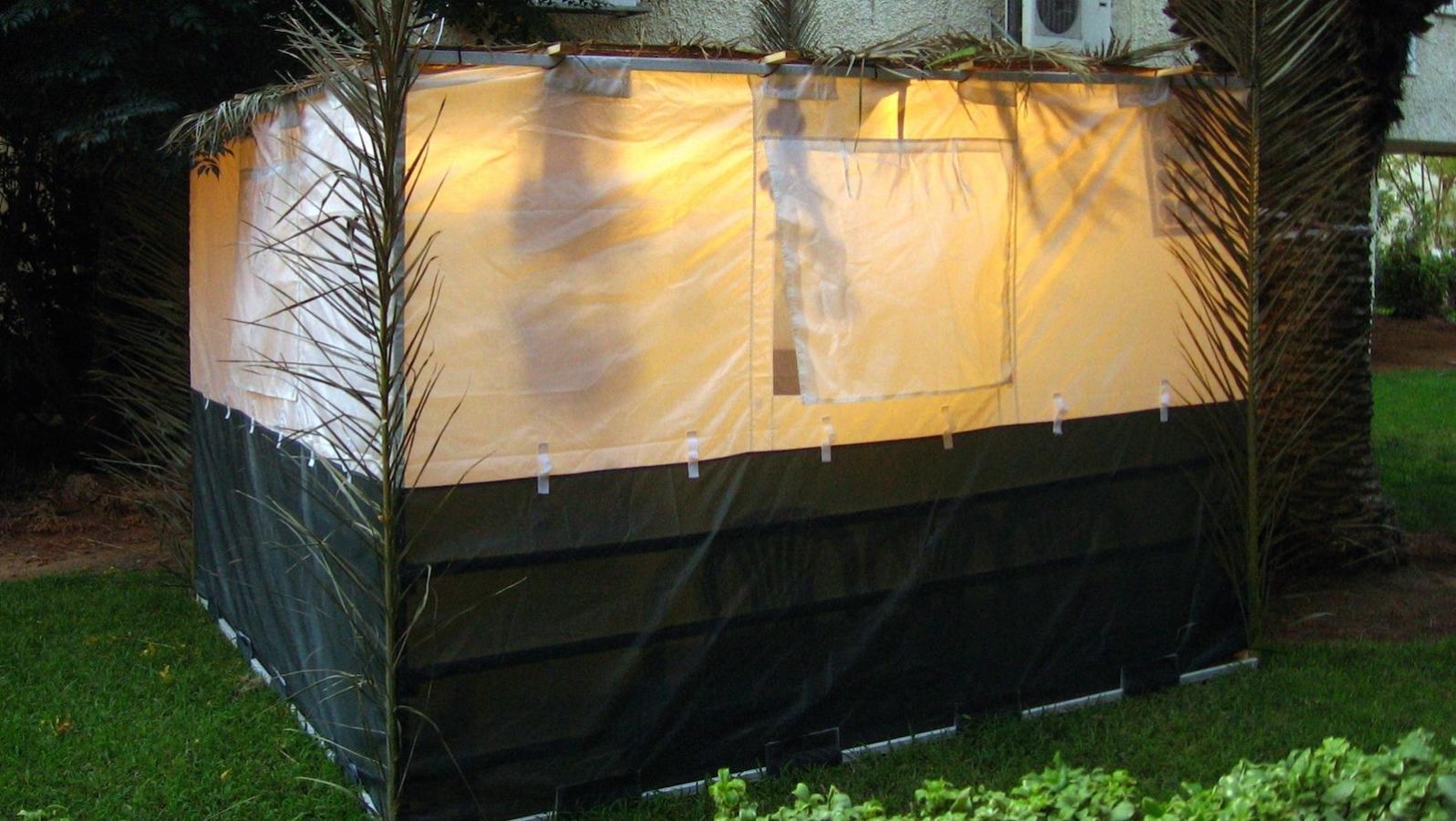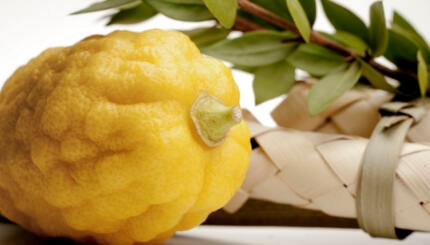Sukkot is a holiday made up of both a beginning yom tov (holiday) and subsequent days of hol hamoed (intermediate festival days). This means that the opening of the holiday (the yom tov) is observed similarly to how one would observe a Sabbath (with certain differences). The ensuing or intermediate days of the holiday still form part of the festival, but are observed differently. It is traditional to decrease one’s amount of work on the intermediate days, though the prohibition of labor for the intermediate days is not as encompassing as Shabbat or yom tov.
Mo’adim L’Simcha
During the hol hamoed period it is customary to greet everyone with a statement of joyous celebration. The various greetings involve statements alluding to “times of joy” (mo’adim l’simcha) and “holidays and times for celebrating” (chagim u’zmanim l’sasson). The themes of celebration and happiness are integral to the holiday of Sukkot.
Eating in the Sukkah
The sukkah (hut) remains standing throughout the intermediate days, as does the obligation to eat meals within the sukkah. This obligation has various interpretations in modern Jewish life. Traditional Jews either find a sukkah or just “snack” during these days. A few individuals even own portable “car sukkot.” Liberal Jews will eat in the sukkah whenever possible.
Hoshanot, Special Prayers
Throughout these days there are special prayers introduced into the morning liturgy called hoshanot that refer to redemptive themes. The phrase hoshana — “save us” — recurs throughout these prayers. While reciting the hoshanot, the congregation walks in a complete circle around the sanctuary, each person carrying his or her lulav (palm fronds) and etrog (citrons).
With your help, My Jewish Learning can provide endless opportunities for learning, connection and discovery.
Hoshanah Rabbah
The seventh day of Sukkot is called Hoshanah Rabbah, or the Great Hoshanah. On this day there are expanded prayers for redemption that are recited as the congregation walks around the sanctuary a total of seven times. These circuits are called hakkafot. Each member of the congregation carries a lulav and willow branches, which are periodically beaten against the ground, reminiscent of Temple times, when branches were beaten against the ground near the altar. The ritual symbolizes a casting away of sins, because the Rabbis considered Hoshanah Rabbah, similar to Yom Kippur, a last chance for repentance before the final divine judgment. During Temple times, the Israelites would make their hakafot around the altar and place the willow branches around the altar with the leaves overlapping the top, thus creating the image of a sukkah. Known as the “custom of the prophets,” this is one of the oldest rituals in Judaism.
Prayers for Rain
The rabbis of the Mishnah stated that on the holiday of Sukkot the world is judged for water. Just as Rosh Hashanah and Yom Kippur marked the process of God judging humanity, Judaism believes that every aspect of creation has its time of judgment and, hence, we celebrate our opportunity to have influence upon these decisions. How much rain will fall in the coming year is decided on the holiday of Sukkot. Therefore, many of the prayers reflect our need for appropriate rains and our request that there be a favorable judgment.
The connection with water can be seen clearly if one stands and observes the hakafot ceremony. The congregation’s movement around the sanctuary resembles the flowing movement of water and, thus, we not only state our prayers for much-needed water, but we also imitate its flow.
During Temple times there were water libations offered throughout the intermediate days. These water offerings were seen as a time of greatest joy for the nation and were celebrated with grand festivities.
Today, many traditional Jews refrain from going to work or school during hol hamoed, though others go about their usual weekday lives, albeit with the presence of the festival — the sukkah, the lulav and etrog, the special prayers — punctuating their daily routine and reminding them of the themes of the holiday.
lulav
Pronounced: LOO-lahv (oo as in boo), Origin: Hebrew, a bundle of branches representing three species -- willow, myrtle and palm -- which are shaken together with the etrog on Sukkot.
Shabbat
Pronounced: shuh-BAHT or shah-BAHT, Origin: Hebrew, the Sabbath, from sundown Friday to sundown Saturday.
sukkah
Pronounced: SOO-kah (oo as in book) or sue-KAH, Origin: Hebrew, the temporary hut built during the Harvest holiday of Sukkot.
Sukkot
Pronounced: sue-KOTE, or SOOH-kuss (oo as in book), Origin: Hebrew, a harvest festival in which Jews eat inside temporary huts, falls in the Jewish month of Tishrei, which usually coincides with September or October.
Yom Kippur
Pronounced: yohm KIPP-er, also yohm kee-PORE, Origin: Hebrew, The Day of Atonement, the holiest day on the Jewish calendar and, with Rosh Hashanah, one of the High Holidays.
hol hamoed
Pronounced: KHOLE-ha-moe-EHD, Origin: Hebrew, the intermediate days of the week-long festivals of Passover and Sukkot, falling between the first two days of each holiday, and the last two days of each holiday.



